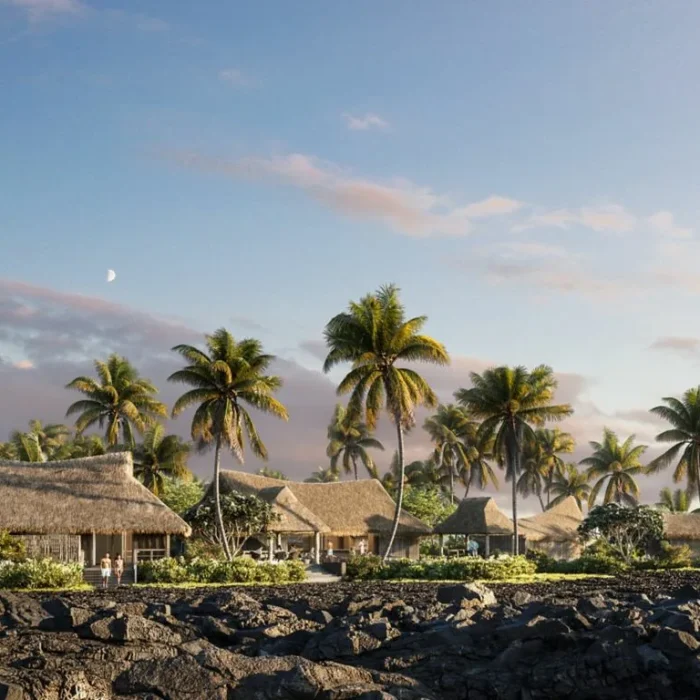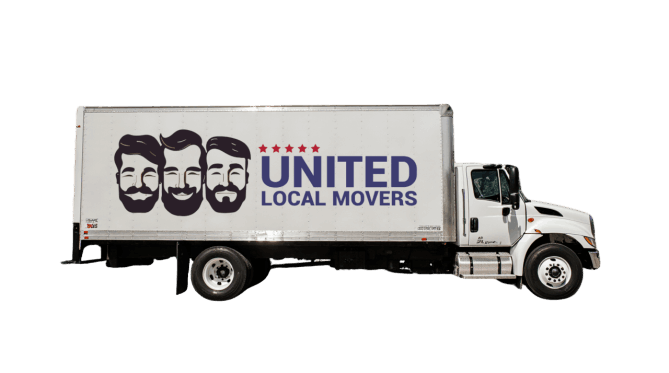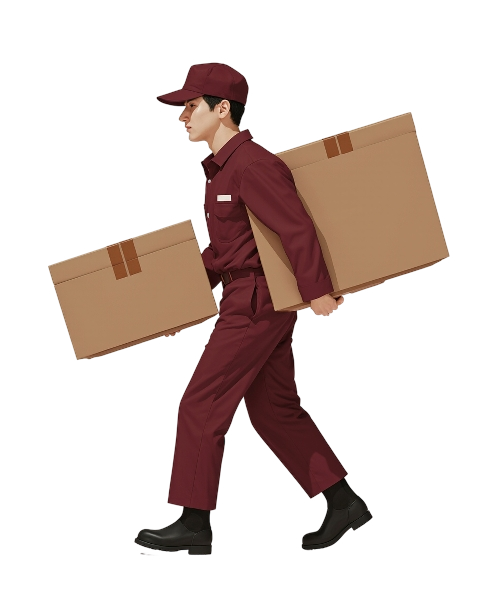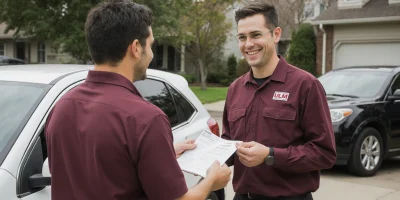Home > Interstate Moving > Moving to Hawaii > Moving to Kailua-Kona
Moving to Kailua-Kona
Kailua-Kona, commonly referred to simply as Kona, is a lively town located on the west coast of the Big Island of Hawaii. Known for its sunny weather, coffee farms, and stunning oceanfront, Kailua-Kona is the heart of the island’s tourism industry and a popular relocation choice for both locals and mainlanders. With a population of around 23,000, Kona offers small-town charm with enough modern amenities to support families, retirees, and professionals.
Moving to Kailua-Kona means enjoying year-round sunshine (in stark contrast to rainy Hilo on the east side), easy access to beaches, and a lifestyle focused on the ocean. From snorkeling and surfing to world-renowned Kona coffee farms and the famous Ironman World Championship, Kona combines relaxation with vibrant activity.
At the same time, challenges like high costs, limited job options outside of tourism, and geographic isolation can make life here difficult for some. This guide breaks down the pros, cons, and realities of relocating to Kailua-Kona so you can make the best decision for your move.

Why More People Are Moving from the Mainland to Kailua-Kona
Kailua-Kona has become a magnet for people relocating from California, Oregon, Washington, and even East Coast states. The main reason is lifestyle. Kona offers constant sunshine, ocean access, and a laid-back pace of life that appeals to families and retirees seeking a healthier, outdoor-oriented lifestyle.
Affordability, compared to Maui or Honolulu, is another factor. While still expensive compared to mainland U.S., Kona’s housing and rental prices are generally lower than those in Oahu’s tourist hubs or Maui’s luxury communities.
Coffee and agriculture add uniqueness. Kona coffee is globally famous, and many newcomers are drawn to the idea of living in or near coffee-growing country.
Community is another strength. While Kona is busier than Hilo, it still retains a small-town feel where neighbors know one another, and cultural festivals celebrate Hawaiian traditions year-round.
Finally, the Ironman World Championship and outdoor sports culture bring a sense of international recognition and vibrancy to this otherwise small town.
Pros of Living in Kailua-Kona
The biggest pro is weather. Kona is famous for its sunshine, averaging over 270 sunny days a year. For people who dislike Hilo’s constant rain, Kona is paradise.
Access to the ocean is another advantage. Beaches, snorkeling spots, and diving locations are just minutes away. Kailua Bay and Magic Sands Beach are favorites among locals and tourists.
Community is another strength. Kona is welcoming, with a mix of long-time residents, Hawaiian families, and newcomers from the mainland creating a diverse cultural environment.
Food and coffee culture thrive here. From fresh seafood to farmers markets, Kona’s dining scene is tied to its agricultural roots and oceanfront location.
Finally, the slower pace and safety of life here make Kona an attractive option for retirees, families, and anyone seeking peace without losing modern conveniences.

Ready to get moved? Get a FREE quote now
Book your move easily and stress-free!
Cons of Living in Kailua-Kona
The most obvious drawback is cost. Groceries, gas, and utilities are more expensive because they’re imported. Housing costs, while cheaper than Oahu or Maui, remain high by U.S. standards.
Job opportunities are limited. Most employment is in tourism, hospitality, or agriculture. High-paying positions in corporate sectors are rare, and many residents work multiple jobs.
Geographic isolation is another con. The Big Island is far from the mainland, and even within Hawaii, Kona is several hours away from Oahu’s larger job and healthcare markets.
Healthcare access can be limited. While Kona Community Hospital provides basic care, specialized services often require travel to Honolulu.
Finally, traffic in town can be heavy during tourist season, and the area’s growth has outpaced infrastructure in some neighborhoods.

What Life is Like in Kailua-Kona
Life in Kona is defined by sunshine, the ocean, and community. Residents often start the day with a swim or surf session, shop at the Kona Farmers Market, and gather with friends and family in the evenings.
Neighborhoods vary widely. Holualoa offers coffee-farm country living with cooler mountain air. Keauhou provides suburban comfort with resorts and golf courses. Downtown Kona, along Aliʻi Drive, is busier, filled with restaurants, shops, and oceanfront condos.
Food culture reflects both Hawaiian and international influences. Residents enjoy poke bowls, fresh fish, Hawaiian barbecue, and local produce. Kona’s farmers markets are hubs for fresh fruit, vegetables, and handmade crafts.
Community events are important. From the Ironman World Championship to King Kamehameha Day Parade, Kona celebrates Hawaiian culture and international sports with pride.
Overall, Kona life feels vibrant yet relaxed, offering the best of island living with the convenience of being on Hawaii’s largest island.
Living Costs in Kailua-Kona
Kona’s cost of living is high compared to the mainland but moderate compared to other Hawaiian tourist towns.
| Category | Kailua-Kona | National Average |
|---|---|---|
| Housing (Rent per Month) | $2,000 | $1,570 |
| Utilities | $210 | $180 |
| Groceries | $400 | $330 |
| Transportation | $170 | $140 |
| Healthcare | $470 | $440 |
Housing costs are higher in central Kona but cheaper in rural areas outside town. Groceries and utilities remain high due to importation, though many residents offset costs with solar power or local produce.

Ready to get moved? Get a FREE quote now
Ready to get moved? Get a FREE quote now
Schools and Education in Kailua-Kona
Kona is served by the Hawaii Department of Education. Schools include Kealakehe High School, Konawaena High School, and middle and elementary schools across the district. Quality varies, but schools often benefit from smaller class sizes compared to Oahu.
Private schools like Makua Lani Christian Academy and Innovations Public Charter School provide alternatives for families seeking specialized or faith-based education.
Higher education opportunities include Hawaii Community College’s Palamanui Campus in Kona, offering associate degrees and workforce training. The University of Hawaii at Hilo, about 1.5 hours away, provides broader academic opportunities.
Kona’s schools emphasize community, cultural education, and bilingual programs, reflecting Hawaii’s diverse heritage.
Transportation and Getting Around
Kona is car-dependent, with Highway 11 and Highway 19 connecting the town to other parts of the island. Traffic downtown can be heavy during peak tourist seasons.
Public transportation is limited to Hele-On Bus, which serves major towns on the Big Island but is impractical for daily commuting.
For air travel, Ellison Onizuka Kona International Airport offers direct flights to Oahu, the U.S. mainland, and some international destinations, making travel easier than from Hilo.
Cycling and walking are practical in certain neighborhoods and along Aliʻi Drive, but cars are essential for most residents.

United Local Movers: Our Services
Relocating to Kailua-Kona requires movers who understand island logistics. United Local Movers provides professional packing, secure storage, and long-distance relocation services tailored for Hawaii moves.
Whether moving into an oceanfront condo on Aliʻi Drive, a coffee farm home in Holualoa, or a suburban house in Keauhou, our team has the expertise to manage every detail.
With transparent pricing and customized plans, United Local Movers ensures stress-free relocations to Kailua-Kona.
Average Cost to Move to Kailua-Kona
Relocations to Kona involve higher costs due to shipping and logistics from the mainland.
| Move Type | Estimated Cost |
|---|---|
| Local Move (1-2 Bedrooms) | $1,200–$2,500 |
| From Mainland U.S. | $5,000–$10,500 |
| Full Packing Services | + $500–$1,000 |
| Storage Options | $150–$300 per month |
United Local Movers specializes in Hawaii relocations, managing shipping and delivery for smooth transitions.


How to Choose the Right Moving Company
When relocating to Kailua-Kona, it’s essential to select movers with Hawaii experience. Always confirm licensing, insurance, and shipping partnerships.
Customer reviews are a strong indicator of reliability. Movers should be transparent about timelines, as ocean freight can add weeks to delivery.
United Local Movers combines national reach with Hawaii-specific expertise, making it the trusted choice for Kona relocations.
Final Thoughts
Kailua-Kona is one of the most desirable places to live in Hawaii, thanks to its sunshine, beaches, coffee culture, and sense of community. While high costs, limited jobs, and geographic isolation pose challenges, the benefits — stunning scenery, laid-back lifestyle, and outdoor opportunities — often outweigh the drawbacks.
For families, retirees, and professionals seeking a slower, sunnier, and more community-centered life, Kona is an appealing choice. And with United Local Movers, your relocation to Kailua-Kona can be smooth, professional, and stress-free.




